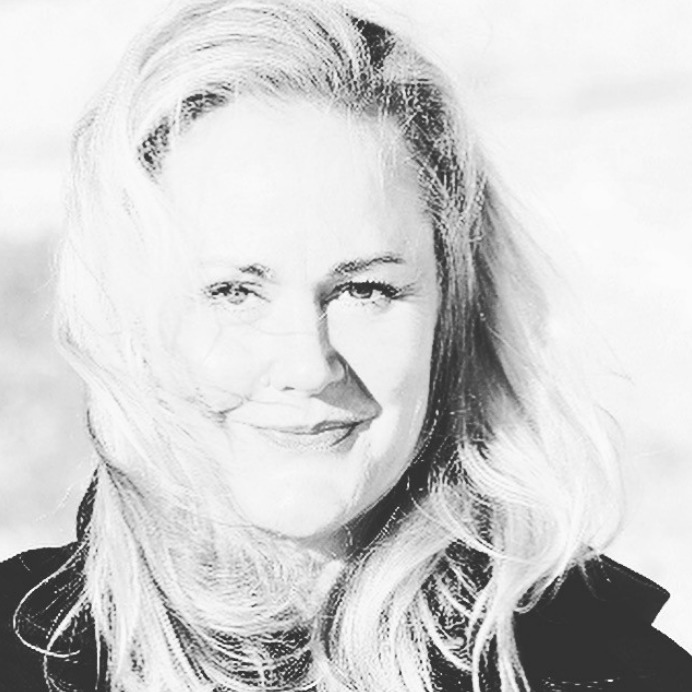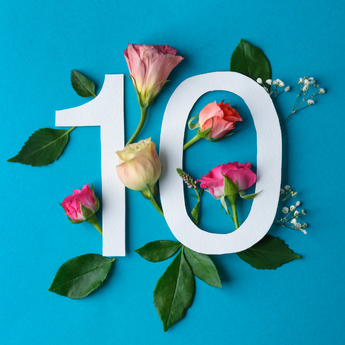
In this new, monthly column, senior writer and editor Adriana Ermter shares her personal experiences with breast cancer
By Adriana Ermter
When I was five, I fell from the top of the swing set in my backyard and onto my right side, breaking my elbow. Why I was hanging upside down from the top bar unsupervised I don’t know, but it’s safe to say I was copying my older sister and playmates. Even back then I was super competitive. If someone else was doing something I had to prove I could do it too. My stubbornness resulted in a sling and a hot and itchy cast that I wore and endured (not quietly) for the entire summer. The swing-set incident left me with a double-jointed elbow that in later years became a nemesis to my synchronized swimming coaches who would holler at me from the pool deck to straighten and tighten my right arm, which being double-jointed and all was not an easy feat…but more about synchro later.
The point I’m making is that testing—which when I was a five-year-old wannabe trapeze artist included a series of X-rays to rule out skull fractures and confirm the broken elbow, resulting in resetting my bones and the aforementioned cast—is crucial to survival. Period. Particularly when it comes to breast cancer. So it only seems logical that as a breast cancer survivor I’m more than a little frustrated the Canadian Task Force on Preventive Health Care is recommending clinicians and hospitals decrease women’s access to life-saving breast cancer tests.
Updates on Breast Cancer Screening
According to the Canadian Task Force guidelines, the new recommendation for breast cancer testing for women ages 50 to 69 years is one mammogram every two to three years as opposed to its current status of one every year. Additional testing like ultrasounds and MRIs are now deemed unnecessary unless otherwise approved by a doctor. And if you’re younger than 50, you can forget about having any testing, unless you have a family history of breast cancer and/or are exhibiting symptoms of the disease.
The rationale is that testing (or screening as it’s called in the guideline), leads to over-diagnosis, results in unnecessary treatment of cancer that would not have caused harm in a woman’s lifetime and has physical and psychological consequences from false positives. Personally, if my doctors told me I’d been incorrectly diagnosed through a “false positive,” the only consequence would be sore facial muscles from smiling and maybe a margarita hangover. Any woman I’ve ever spoken with has said, no matter the outcome, she wants to know and has the right to know if she has cancer.
Survey Says…
In 2019, a national U.S. survey was taken through cancer.net, asking Americans about their thoughts on cancer. Six out of 10 people said they are concerned about developing cancer, while a 2017 Avon Worldwide survey stated that the World Health Organization estimates that breast cancer kills more than 500,000 women around the world every year.
Astounding right? Considering most doctors will tell you that breast cancer is one of the better cancers to be diagnosed with, although only in the early stages I-II, as so many scientific advancements have been made. This is where I thank bigwig companies, such as Avon, Estée Lauder, CIBC and Proctor & Gamble for stepping up. Their tireless support, research and education provides so much information, like the Avon survey that lists the World Health Organization as saying that the annual half-million deaths could be greatly reduced if cancer were detected at an earlier stage.
The words that stand out here for me are twofold. First, “could be,” because the Canadian Cancer Society lists breast cancer as the second leading cause of death from cancer in women with an average of 75 women diagnosed, while another 14 women die from breast cancer every day. Second, “greatly reduced if cancer were detected at an earlier stage.” This statement is affirmed in a special report documented by the Canadian Cancer Society and the Government of Canada in 2018, where it states that more than 80 percent of female breast cancers that have been diagnosed at an early stage (I or II), have most likely been found as a result of early detection through breast cancer screening.
I’m one of this 80 percent. Thanks to five mammograms, seven ultrasounds and three MRIs and counting, (I’m high-risk now, so tested every three months) I’ve been cancer free for one year.
Background Check
I grew up in Calgary, Alberta where the sky is blue, the air is clean and swing-set bars should not be hung upside-down from.
When I was 15, I became sick with what my parents thought was a terrible flu, so my mom drove me to the hospital. After what felt like a million tests, I had emergency surgery. Turns out, I didn’t have the flu. The doctors found and removed a grapefruit-sized cyst off my left ovary and fallopian tube.
Now, you would think that at 5 foot six inches, rail thin and weighing 96 pounds soaking wet I would have seen the lump bulging against my lower abdomen, but I didn’t. Luckily the cyst was benign and was removed before it ruptured and spread toxic fluid throughout my body. Because of this, my age, the size of the cyst and the complete randomness of its presence, I was an anomaly at the hospital. Swarms of doctors came by my bed each day to read my chart, talk amongst themselves and congratulate the surgeon who had the foresight to order the ultrasound that detected the cyst. Two months later, I was back to normal and in the pool. Two years later, I had more flu-like symptoms, so I had an ultrasound, which found another cyst in almost the exact same spot. It was smaller than the first, but again, present in my body without rhyme or reason. It was removed and life carried on.
I graduated high school, took a gap year modeling for companies like Beeman’s Gum, Mountain Magic and the Calgary Herald and answered the telephone at my retail job with the store’s mandated greeting “happy paddling, Beaver Canoe.” Later, after two years of studying at the University of Calgary to become a translator while swimming my way towards certification as a national-level synchronized swimming coach, I applied to and was one of 120 students out of 3,500 applicants accepted into the University of Ryerson’s Radio & Television Arts program in Toronto. I packed a suitcase and moved.
Coaching national-level synchronized swimmers 20 hours a week (along with slinging suede skirts and leather car coats at Danier on Sundays), I paid my way through a four-year Bachelor of Applied Arts degree in three years. I graduated, got my first, second and third jobs until six years and an associate television producer’s title later, I went back to University where I spent five nights a week absorbing everything I could about magazine publishing. Then, starting on the bottom rung once again, I wrote my way to becoming a senior writer and editor for magazines and newspapers like Salon, FASHION, Flare, Chatelaine, Childview, Figure Skater Fitness, National Post and more.
Testing, Testing 1, 2, 3
Everything was going great (minus a painfully sad divorce… but that’s another story), until I felt a lump under my right armpit while I was on assignment in Amman, Jordan. I knew it shouldn’t be there, but in contrast to the stories I was capturing about displaced children living in refugee camps, worrying about a lump felt self-indulgent.
Once back in Toronto I had it checked out. My family doctor sent me to a specialist at a downtown breast clinic where I filled out the necessary breast cancer forms, my every answer failing Cancer Care Ontario’s requisites for preliminary screening. I could not check the boxes that would determine I qualified for a mammogram, ultrasound or MRI.
No, I was not 50 years or older.
No, I did not have a family history of breast cancer.
No, I was not like Angelina Jolie and a carrier for the BRCA1 gene or even the BRCA2 gene, which are mutations that may increase my risk for breast cancer. (Okay, so the form doesn’t actually mention Angelina Jolie, but since she was super public about having BRCA1 complete with undergoing a mastectomy, as far as pop culture goes she’s as synonymous with breast cancer as she is with Brad Pitt, wearing vials of blood as jewelry and having inappropriate PDA with her brother.)
No, I did not have pain, discoloration or swelling in either of my breasts.
No, I had not had radiation therapy before the age of 30 or a minimum of 8 years ago.
No, I had never been tested positive for any type of cancer.
When I handed in the forms, the doctors looked at me like I shouldn’t be there. Then they stood in a clump in the hallway, three feet from me reading the information and talking. They didn’t think I needed testing. But I did.
I may not have been lying face down in the grass in my parents’ back yard or fading in and out of foggy unconsciousness in the children’s wing of a Calgary hospital, but I’d been down this road before and I was adamant the hard, pea-sized lump residing in my armpit had to go. After all, if the bumps and breaks of my past had proved anything, like Molly Bloom in Molly’s Game, I could not, would not be killed easily. At least not when I could have access to the right tests and care.
Breast Cancer is Sneaky
You see the tricky thing about breast cancer is that it’s random. You can’t blame it on smoking and drinking your way through your 20s. (I asked.) You also can’t point the finger at your deodorant/antiperspirant choices, sugar consumption, lack of children or any other medical myth that has floated through cyberspace. The evidence is just not there. While your DNA can push you to the front of the line and daily stress, environmental pollution, later marriages and childbirth are areas being researched, the hard reality is: breast cancer is sneaky and an early diagnosis can be your biggest savior.
An early diagnosis also makes good fiscal sense. According to the European Journal of Cancer a lifetime diagnosis of stage I breast cancer in Canada costs approximately $23,275, as opposed to $36,340 for stage IV or metastatic cancer. Considering anyone can be a potential candidate, much like me and the broken elbow, the ovarian cysts and the armpit lump, testing is critical.
Recently, I signed a petition through Dense Breasts Canada, to advocate for just that. I want ageless access to mammograms, ultrasounds, MRIs and more. And more importantly, just like you and every other woman living on this planet, I deserve to receive the screening I need at whatever age I feel most appropriate for my body to ensure I am breast cancer-free for the rest of my life.
Adriana Ermter is an award-winning writer and editor. Her work can be read in Figure Skater Fitness, Canadian Hairdresser and IN Magazine, as well as online at 29Secrets.com, RethinkBreastCancer.ca, Popsugar.com and AmongMen.com. The former Beauty Director for FASHION and Editor-in-Chief for Salon and Childview magazines lives in Toronto with her very spoiled cat, Trixie-Belle. You can follow Adriana on Instagram @AdrianaErmter or on Twitter @AErmter
Photo by Mara Tanney






